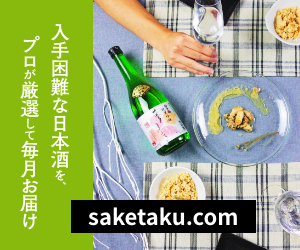- Home
- Sake
- Kanozan Junmai-Ginjo
Kanozan Junmai-Ginjo(Chiba)
| Specially designated name | Junmai-Ginjo-shu | |
|---|---|---|
| Type | ||
| Material Rice | Fusakogane, Fusanomai | |
| Polishing ratio | 60% | |
| Alcohol | 15度 | |
| Sake meter value | ||
| Acid Level | ||
| Amino Level | ||
| Rich / Light | ||
| Dry / Sweet | ||
| Taste Type |
| Specially designated name | Junmai-Ginjo-shu |
|---|---|
| Type | |
| Material Rice | Fusakogane, Fusanomai |
| Polishing ratio | 60% |
| Alcohol | 15度 |
| Sake meter value | |
| Acid Level | |
| Amino Level | |
| Rich / Light | |
| Dry / Sweet | |
| Taste Type |
| Brewed by | Wakura Shuzo Co., Ltd. |
|---|---|
| Production | Chiba |
| Brewing Method | |
| Sake Yeast | |
| Recommended temperature |
Product Description
Sake Search Review
[Brewery]
Ikeda brewery and the Haramoto family founded the Wakura brewery in 2006. The Ikeda brewery started its business in 1874 in Futtsu city of Chiba prefecture. The Haramoto family first established its brewery at the end of the Edo Period. The Wakura Brewery produces Shochu and liqueurs as well.
They endeavor to achieve “ Sake as a Japanese culture,” with their philosophy, “ working hard, being loyal to the basics, hand-made.”
They mainly use local products for sake making, apart from Daiginjo. For example, rice cultivated in Chiba prefecture is for sake production, and a sweet potato called “Beniazuma” is for Shochu.
[Brand]
“Kanozan” is a brand that the Haramoto family invented before the Wakura brewery was founded. The brand consists of 75% of Fusakogane rice and 25% of Fusanomai rice. Both are cultivated in Chiba prefecture.
Fusakogane was registered in 2006 as an original product of this region.
The cultivation takes up 10% of the total planted area. The brand is primarily traded for food as the rice is big and sticky sold at a reasonable cost. It is also highly recognized by many rice retailers and chefs. Recently, the amount of local sake made with Fusakogane has increased.
The Fusanomai was developed for brewing sake in Chiba prefecture in 2001.
Shinpaku(the white part at the center of the rice) is relatively small, and the shape is good so that it is suitable for Ginjoshu that requires brown rice to be polished by 60% or below.
Kanozan is made of these with the rice being polished by 60%.
[Product]
[Taste]
The flavor is slightly sweet, but it brings a wild like sharpness, bitterness and tanginess, too. It has the well-balanced flavor that a quality sake usually imparts. I also felt a uniqueness behind the familiar taste.
[Food pairing]
“Aji Fry(Fried Aji fish)”
Aji Fries coated with thinner and non-seasoned batter were deep-fried. The white fish was seasoned with a pinch of salt. As the fish itself was fatty and juicy, I did not need any relishes, apart from a lightly seasoned sauce.
After tasting the fish, I sipped the sake. The fish softened the bitterness and sweetness of the sake, which brought a harmonized umami.
An Aji Fry is one of the specialties of Kaneya area in Futtsu city. Given that they are locally-produced foods, it was an excellent match. Many famous Japanese restaurants serve top-notch Aji Fries. Those that I had were from the deli of a local supermarket. If you visit Futtsu city, it would be a good idea to have a go!
“Ham Katsu ”
Ham Katsu is fried Ham. Kanozan’s sweetness was overwhelmed by the ham’s fattiness. The combination was not as good as I expected.
It would be better to enjoy singly, rather than pairing.

